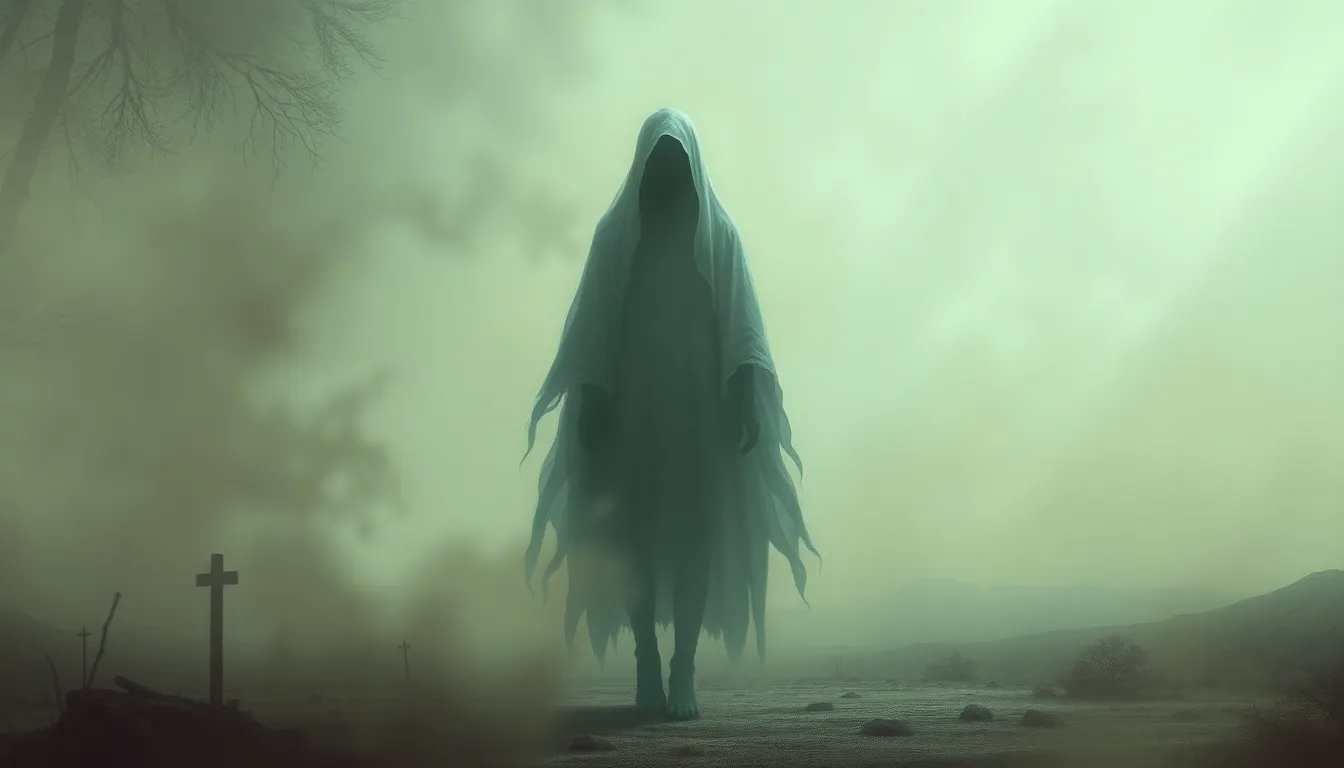The Best Fluffy Pancakes recipe you will fall in love with. Full of tips and tricks to help you make the best pancakes.

The Apparition Painting: Unveiling Ghostly Beauty and the Secrets of the Supernatural
In the world of art, few pieces spark as much intrigue and debate as the apparition painting. With its ghostly figures and ethereal landscapes, it invites viewers to explore the boundary between reality and the supernatural. You might find yourself questioning whether that shadowy figure is a figment of imagination or a glimpse into another realm.
The Apparition Painting Overview
The fascination with apparition paintings captivates audiences through ghostly figures and ethereal landscapes. These artworks invite viewers to explore the boundary between reality and the supernatural.
Historical Context
Originating in the 19th century, apparition paintings reflect societal interest in the paranormal. Artists produced these works during a time when spiritualism gained traction, and the public sought connections with the afterlife. Marked by their unique storytelling, these pieces often illustrated ghostly presences in familiar settings. Artists like Samuel Palmer and James Whistler contributed significantly to this genre. They captured hauntingly beautiful scenes that invoked emotional responses. The blending of realism and fantasy in these paintings shows the cultural shift toward the exploration of unseen realms.
Artistic Significance
Artistic significance lies in how apparition paintings challenge conventional representations of reality. These works provoke deep contemplation about existence beyond the physical realm. Incorporating surreal elements, artists express complex emotional experiences and societal fears. Techniques such as soft brushwork and delicate color palettes create a dreamlike quality. This style enhances the ethereal nature of the depicted figures. By engaging viewers, apparition paintings encourage exploration of belief systems and personal interpretations of the supernatural. They serve as enduring examples of how art can communicate profound themes and emotions.
Key Features of The Apparition Painting

Artworks in the apparition genre possess distinct qualities that elevate their allure. These features encompass color and composition, along with subject matter that captivates viewers.
Color and Composition
Color plays a pivotal role in apparition paintings. Artists often utilize soft, muted hues to create an ethereal atmosphere. Light and shadow blend seamlessly, enhancing the ghostly figures’ presence. Compositional techniques focus on balance and depth, guiding the viewer’s eye through the artwork. Layered brushstrokes convey a sense of movement and fluidity, while negative space adds mystery. This careful arrangement invites contemplation, making viewers pause and reflect on the visual narrative.
Subject Matter
Subject matter in apparition paintings frequently includes spectral figures and haunting landscapes. These mysterious entities often embody themes of loss, longing, and the unknown. Artists select settings that evoke a sense of nostalgia, enhancing the emotional resonance. Scenes may depict solitary figures in desolate environments, prompting viewers to connect personally with the themes presented. The interplay between reality and fantasy underpins the intention, as artists challenge perceptions of existence beyond the physical realm. Each painting tells a story that acknowledges the complexities of life, death, and the supernatural.
Influences on The Apparition Painting
The apparition painting genre reflects various cultural and personal influences. These artworks integrate themes that resonate deeply with societal beliefs and artistic movements.
Cultural Impact
Cultural movements during the 19th century greatly influenced apparition paintings. The rise of spiritualism captivated individuals seeking to connect with the supernatural. Such interests often stemmed from societal upheaval following events like the Industrial Revolution and significant wars. Artworks frequently depicted themes of mourning, loss, and the afterlife, mirroring societal anxieties. Many viewers connected emotionally with artworks due to their shared experiences and beliefs. Additionally, these paintings sparked discussions about death and existence, making the genre vital in the cultural landscape. By engaging with these themes, artists provided a means for society to confront and reflect on its perceptions of life and the unknown.
Artist’s Background
Individual artists shaped the characteristics of apparition paintings through their unique backgrounds. For instance, Samuel Palmer’s pastoral scenes symbolize his connection to nature and the spiritual realm. James Whistler incorporated influences from Japanese aesthetics, emphasizing harmony and balance in composition. Many artists drawing on personal experiences infused their work with emotional depth and introspection. This blending of styles encouraged their paintings to transcend traditional boundaries, prompting viewers to explore personal beliefs and interpretations of the supernatural. Backgrounds marked by various artistic influences contributed to the haunting beauty present in apparition paintings. These artists left a significant impact, as their life experiences often informed their creative directions and thematic explorations.
Legacy and Interpretation
Artworks featuring apparition themes hold significant cultural importance that transcends their time of creation. These paintings reflect deep societal interests in the paranormal, especially during the 19th century when spiritualism gained popularity. Elements of the supernatural often prompted viewers to reconsider their belief systems, bridging the gap between the material world and the ethereal.
Interpretative characteristics of apparition paintings include emotional depth and personal connection. Audiences frequently engage with themes of loss and longing, experiencing the haunting emotional resonance embedded in ghostly figures. The interplay of light and shadow in these works emphasizes the presence of the spectral, guiding viewers toward contemplation of the unseen dimensions of reality.
Cultural narratives around death and mourning are prevalent in these artworks. Social upheaval, such as that seen during the Industrial Revolution or following significant wars, often influenced the themes portrayed. European artists responded to these societal anxieties, crafting visual dialogues that resonate with viewers’ experiences of grief and existential reflection.
Individual artist backgrounds add layers of interpretation to apparition paintings. Samuel Palmer reflected a strong connection to nature and spirituality, while James Whistler’s incorporation of Japanese aesthetics highlighted balance and harmony. Personal perspectives shaped each artist’s approach to the supernatural, inviting deeper exploration of personal beliefs about life and death.
Artistic techniques contribute significantly to the legacy of apparition paintings. Innovations in application, such as soft brushwork and muted color palettes, reinforce the ethereal quality of the images. This blending of realism and fantasy encourages ongoing discourse about perception and existence beyond the physical realm.
Conclusion
Apparition paintings continue to captivate audiences with their haunting beauty and profound themes. They challenge perceptions of reality and invite introspection into the mysteries of existence. The emotional depth captured by artists like Samuel Palmer and James Whistler resonates with viewers, encouraging a personal exploration of the supernatural.
These artworks not only reflect the societal anxieties of their time but also serve as timeless reminders of humanity’s fascination with the unknown. As viewers engage with these ethereal images, they find themselves drawn into a dialogue about life, death, and what lies beyond. The legacy of apparition paintings endures, inspiring ongoing reflection and conversation about the intersection of art and the supernatural.
